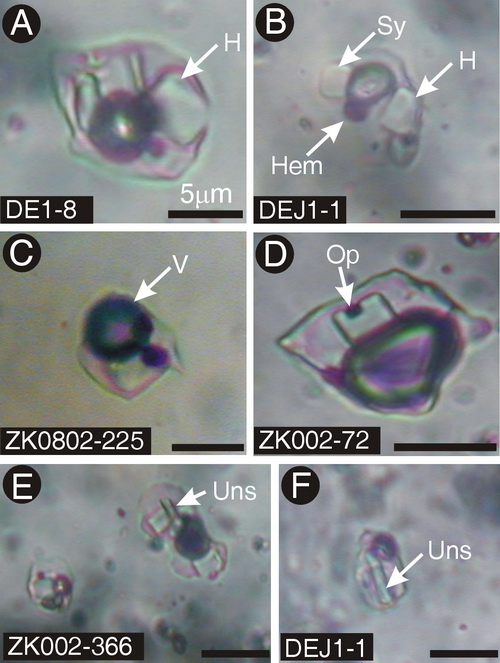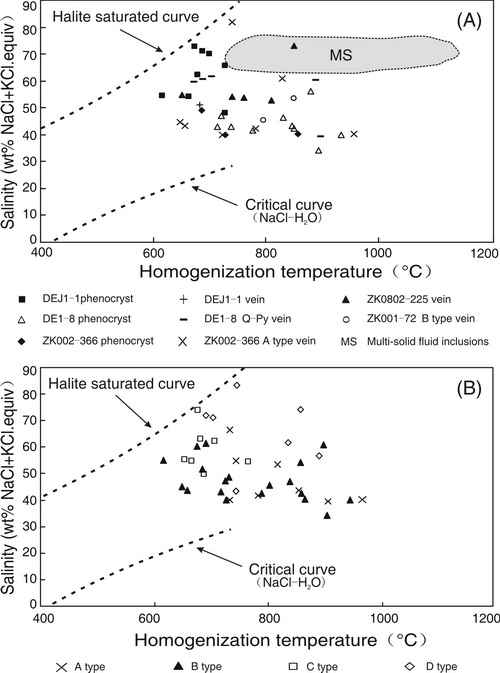Postdoctor LI Jinxiang and his teacher QIN Kezhang focus on magmatic fluid inclusions of higher temperature and high salinity discovered in the Duobuza porphyry copper–gold deposit.
Through the study of these inclusions, we explore the initial time, pressure, and mechanism of fluid exsolution from the magma and the magmatic-hydrothermal evolution contributing to porphyry copper–gold mineralization.
Two key factors are proposed for the fluid evolution responsible for the large size of the gold-rich porphyry copper deposit of Duobuza: (i) ore-forming fluids separated early from the magma, and (ii) the hydrothermal fluid system was of magmatic origin and highly oxidized.

Fig. 1. Types of fluid inclusions with high-temperature and salinity from Duobuza porphyry copper–gold deposit. (Image by LI)

Fig. 2. Homogenization temperature (Th) versus salinity diagram for hightemperature fluid inclusions in Duobuza porphyry copper–gold deposit. (A) Classified by the host mineral quartz; (B) classified by the types of fluid inclusions. (Image by LI)
Li et al. High temperature magmatic fluid exsolved from magma at the Duobuza porphyry copper-gold deposit, Northern Tibet. Geofluids, 2011,11:134-143 (Download Here)